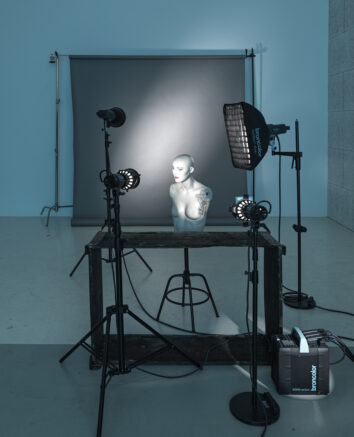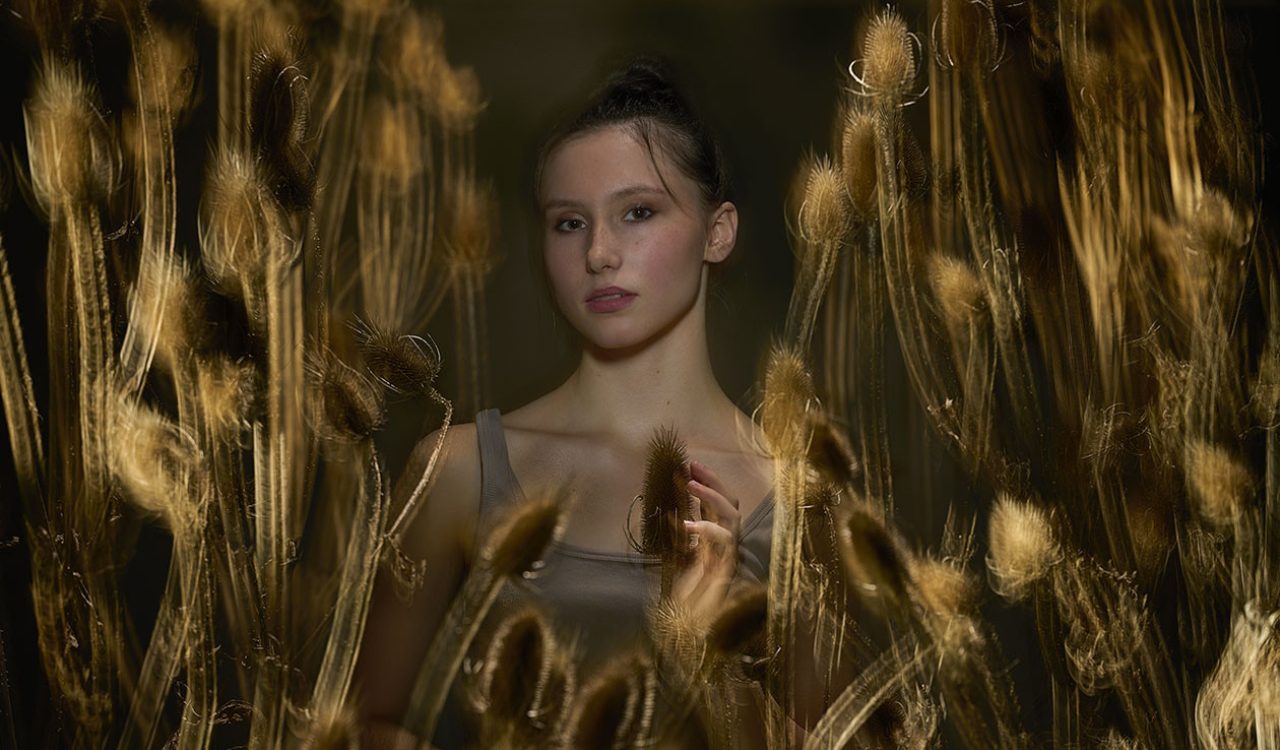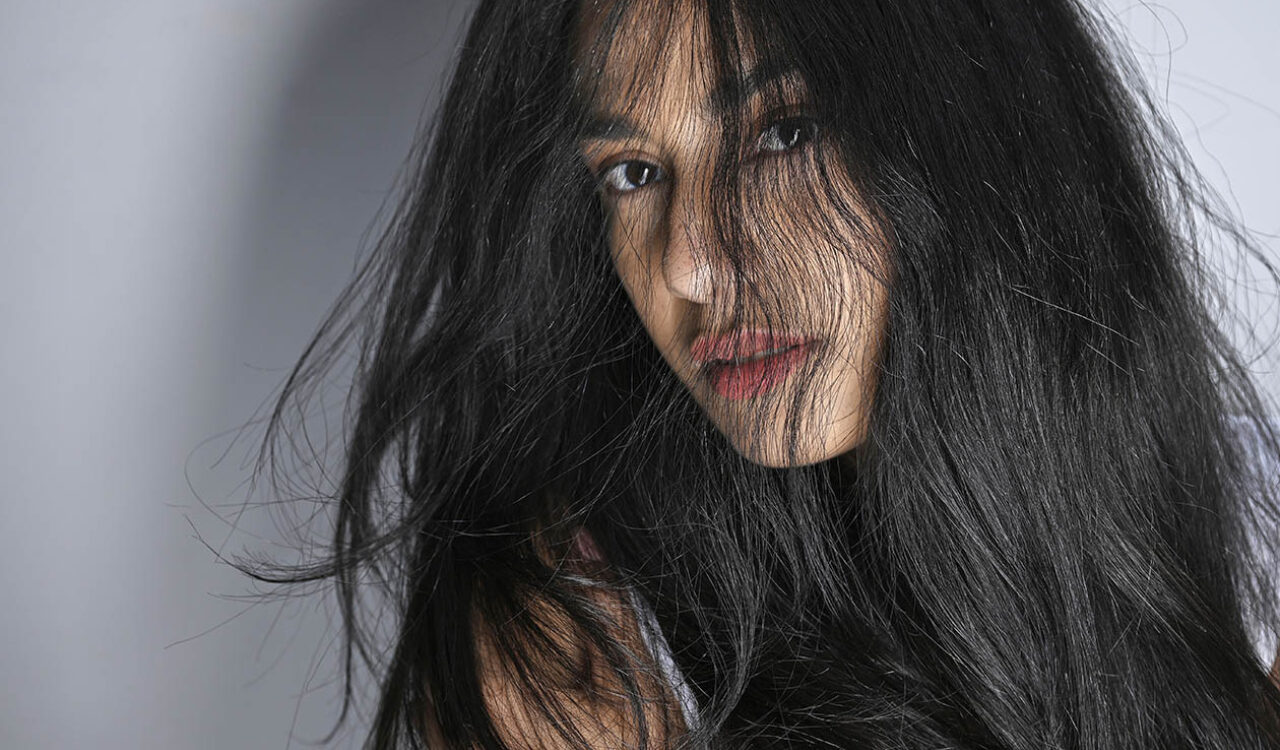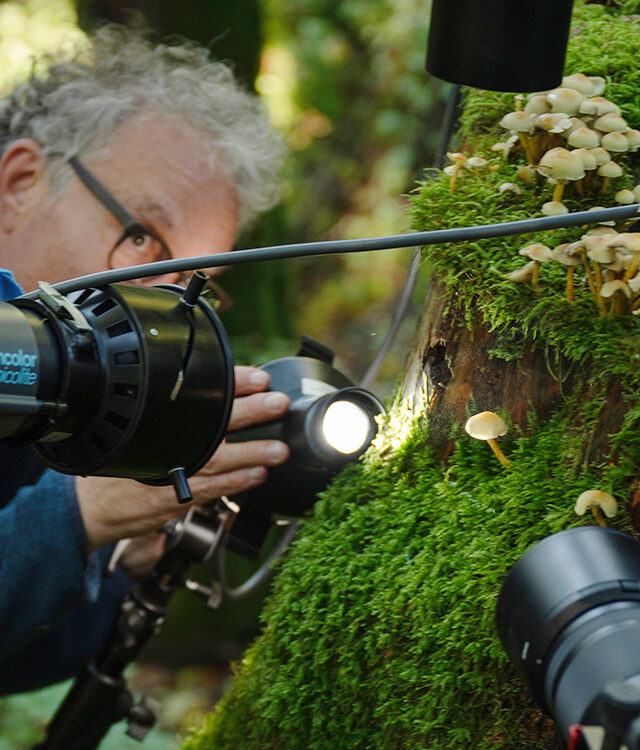Most of the time, you use the projection attachment on the Picolite to selectively flash certain areas of a small set. The four integrated sliders allow this with incredible precision. This example shows a different application, namely the projection of a see-through pattern onto a surface.
The pattern on the model's left upper arm is not a tattoo, but a projection. For this purpose, the corresponding pattern was printed with the highest possible contrast on a transparent plastic foil. With the help of a projection attachment in front of a Picolite, this pattern was then projected onto the arm with maximum sharpness. (For the second, non-retouched image, the film was removed from the projection attachment).

The light from the projection attachment is very homogeneous. The clear light fall-off towards the hand was created with objects held in the beam.
In the neck area, a second Picolite took over the light and illuminated the face. A Fresnel spot attachment was mounted on this luminaire, for which the very sharp shadow under the chin is typical. Making the transition between these two lights homogeneous was the most difficult task in this set.
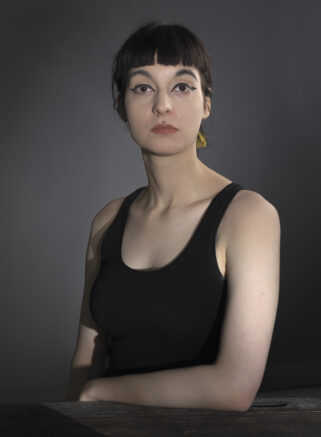
A very discreet backlight and hair light was set up behind the model on the right. A small softbox with a textile honeycomb grid was used for this purpose. The background was exceptionally not lit concentrically, but linearly with a 5:1 strip grid in a P70.
The photos were taken with a medium format camera and a focal length of 80 mm. At a sensitivity of ISO 100, the exposure was made with aperture 16 and a shutter speed of 1/125 s.

